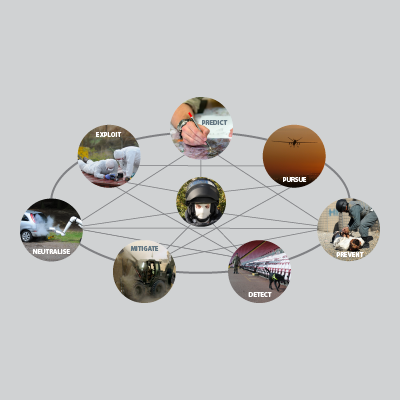Electrical grids are the backbone of a modern society. They carry electrical power over large distances and interconnect various production nodes to the end consumers. There are various switches, amplifiers etc, which regulate and control the power flow. The electrical grid is carefully designed so that it can carry rated current and voltages across a given span of the conductor. Exceeding these specifications may lead to catastrophic failure/explosion of these components of the grid. Nowadays, strong emphasis is placed on the cybersecurity aspect of basic infrastructure, including electrical grids. With the advent of various communication protocol, the components of power networks can be remotely controlled, and this is necessary for load balancing from centralised control station. However, this opens up a vector for unauthorised intrusion by nefarious cyber attackers. This allows them to remotely operate various circuit breakers in the grid and cause blackouts of certain regions or locations. But blackouts are only one of the many situations that can be caused by cyber attacks. If more power is routed to a certain section of the grid, the heating caused by extra current flow can damage the insulation and can lead to a ground fault, releasing 10s of megajoules of energy in less than a second in a confined place. This scenario is like an explosion and can damage the surrounding equipment and personnel. This seminar will cover how components of the grid can be designed using advanced modelling and simulation techniques to protect the immediate vicinity against catastrophic failure or explosion.
The Terrorism Risk Assessment, Modelling and Mitigation Seminar Series (TRAMMSS) is a virtual seminar series focused on technical topics related to terrorism risk assessment, and modelling, including blast modelling and response; IEDs; vehicles as weapons; CBRN; big data for risk assessment, security and screening; and associated mitigation measures.
Speakers
Dr Shailendra Singh is an Associate Professor in the Faculty of Science and Technology (REALTEK) at Norwegian Institute of Life Sciences (NMBU). He received a BE degree in mechanical engineering from the University of Pune, India, in 2004, and a Licentiate and a PhD degree in high voltage engineering from the Chalmers University of Technology, Sweden, in 2015 and 2017, respectively. He has worked in electrification R&D throughout his career, working for ABB, Schneider Electric, Areva etc in Norway, Germany, India etc. His current research interests include the development of first-principle methods for simulating the behaviour of insulating media, plasma physics, fluid transport, and structural dynamics.
Who should attend
This seminar is open to guests from outside Cranfield, who may work in academia, research, or industry. Due to the potentially sensitive nature of this seminar series, guests should be able to show that they are affiliated with an appropriate bona fide organisation.
Cost
The event is free of charge, but participants must register for the TRAMMSS mailing list in advance.How to register
To attend this seminar, you must register for the TRAMMSS mailing list via the online form. Further information on the TRAMMSS community can be found on the main website at cranfield.ac.uk/TRAMMSS.






